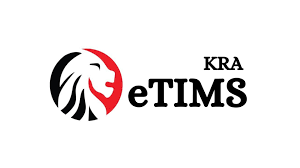The NSSF Act 2013 was enacted in the year 2013. It was to be implemented with effect January 2014; however labour unions led by the Kenya Tea Growers Association and 14 others contested the law at the High Court claiming public participation was not carried out effectively and that the senate was not involved in the legislative process. The high court agreed with the petitioners and declared the law unconstitutional, the NSSF appealed to the court of appeal.
On 3rd February 2022 three Court of Appeal judges, Hannah Okwengu, Mohamed Warsame and John Mativo set aside a High Court order that had declared the law unconstitutional paving the way for its implementation.
Objective of the law
The key driver to this Act is boosting of national savings which will have the duo effect of securing dignity for retirees as well as reduce the governments reliance on foreign debt.
Mandatory Contributions to the Fund
The Act provides that, employers are required to pay to the Pension Fund in respect of each employee in his or her employment-
- the employer’s contribution at 6% of the employee’s monthly pensionable earnings; and
- the employee’s contribution at 6% of the employee’s pensionable earnings deducted from the employee’s earnings.
Restriction on employer in regard with deductions from earnings
An employer is entitled to recover from his employee’s earnings, the employee’s contribution by way of a deduction there from for purposes of paying the employee’s contribution but is not permitted to deduct the employer’s contribution from the employee’s earnings, but shall instead pay from his own resources, and remit to the employee’s account under this Act.
Computation guidelines to employers
For the purposes of the Act, the Upper Earning Limit (UEL) will be KES. 18,000 while the Lower Earnings Limit (LEL) will be KES 6,000. The pension contribution will be 12% of the pensionable wages made up of two equal portions of 6% from the employee and 6% from the employer subject to an upper limit of KES 2,160 for employees earning above KES 18,000.
The employee contribution shall be drawn directly from his salary and wages while the employer’s contribution shall come directly from the employer. The contributions relating to the earnings below the LEL of the earnings (a maximum of KES. 720) will be credited to what will be known as a Tier I account while the balance of the contribution for earnings between the LEL and the UEL (up to a maximum of KES 1,440) will be credited to what will be known as a Tier II account. (NSSF Guide 2013). Individuals earning less than LEL are not subjected to Tier ii
Penalty for default in payment and incorrect contributions
If any contribution for which a contributing employer is required to pay to the Fund is not paid on or before the prescribed day on which the payment in respect of any month is due, a sum equal to five per cent of the amount of that contribution shall be added to the contribution for each month or part of a month that the amount due remains unpaid, and any such additional amount shall be recoverable at the same time and in the same manner as the contribution to which it is added.
Contracting out by employer
An employer may opt to pay Tier II contributions in respect of its employees into a contracted-out scheme it participates in or opts to establish or to participate in.
The opt-out may be exercised subject to the following conditions—
- the employer shall make written request of its intention to opt out to the Authority at least sixty days before opting to contract-out in such a way.
- the written request required under paragraph (a) shall clearly set out such details of the contracted-out scheme as the Authority shall require from time to time in order to ascertain that the contracted-out scheme meets the Reference Scheme Test.
- within thirty days from the date of receiving the written request and provided that the contracted-out scheme satisfies the Reference Scheme Test specified in the Fourth Schedule, the Authority shall respond in writing indicating its approval or otherwise to the employer and notify the Board accordingly.
- where such approval is received, Tier II Pension Fund Credits in respect of the employees shall be transferred from the Pension Fund to the approved contracted out scheme: and
- the contracted-out scheme shall maintain an accurate record of Protected Rights which shall be paid in the same manner as for benefits in respect of Tier II Contributions as prescribed in Part V of this Act.
Contracted-out scheme means an occupational retirement benefits scheme including an umbrella retirement benefits scheme or an individual retirement benefit scheme which has been approved and registered by the Authority for purposes of receiving Tier II Contributions and, where applicable, Tier II Fund Credit transfers from the Fund
NSSF Rates Future Adjustments
The Lower Earnings Limit and the Upper Earnings Limit shall, for the first four years after the commencement date.
After the fourth year and thereafter
- the Lower Earnings Limit shall be, for each financial year, the amount gazetted by the Cabinet Secretary from time to time as the average statutory minimum monthly basic wage for the top urban centres, second tier urban centres and rural areas for the year; and
- the Upper Earnings Limit shall, for each financial year, be the level of earnings equal to four times National Average Earnings
At FH Consulting, we are a community of solvers coming together to deliver sustained outcomes and making a positive and enduring impact. We are ready to help you comply with the NSSF 2013 Act, contact us today.













